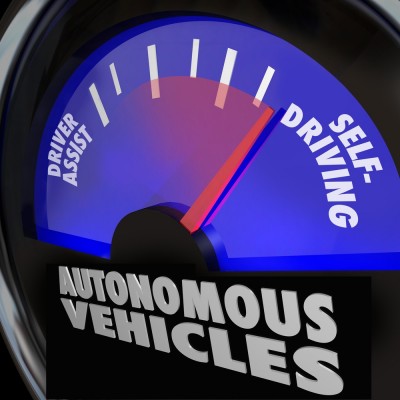The 5-Year Plan for Autonomous Cars
Back in the days when I went to a lot of job interviews, prospective employers would often ask me, "Where do you think you'll be in five years?" and I  always had problems giving them an answer. With everything changing literally minute by minute on this planet, I rarely know what I am doing next week, let alone five years from now.
always had problems giving them an answer. With everything changing literally minute by minute on this planet, I rarely know what I am doing next week, let alone five years from now.
In this blog, Hamblin's Body Paint & Frame is asking the autonomous vehicle universe that same job interviewing question--where will this burgeoning industry be in five years? Will we see more and more autonomous cars in Riverside, CA soon or will they start to disappear eventually as new forms of transportation (flying droids?) emerge?
As we get our minds around this new revolution that will affect our daily lives on so many fronts, Google and Tesla are seemingly lead the way to self-driving cars. When you then throw in all of the amazing strides we've made when it comes to radar, GPS, collision avoidance systems and onboard cameras throughout today's vehicles, autonomous cars are just a logical progression.
Experimentation on autonomous vehicles has been taking place for almost a century, even as far back as the late 1920s, that's right. Most of the buzz was strictly concerning prototype stuff, until Google and Tesla started aggressively pursuing their self-driving technologies within the last eight years. Tesla’s Autopilot will add new features to their currently existing vehicles while Google and-and even Ford now are developing fully-functioning driverless cars.
Right now, there are 70,0000 people using cars with the Tesla Autopilot feature and they have traveled more than 780 million miles using these semi-autonomous cars. Google now has approximately 60 self-drivers that have been driven more than 2 million miles total.
The biggest concern about self-driving cars right now is related to safety, because it is the most unknown aspect of this new technology. Most of the self-driving cars out there right now are running on beta versions, collecting data as they log miles. And other than Tesla’s only fatal car crash involving their semi-autonomous car, accidents are few and far between and safer than conventional cars. Google has recorded only 24 minor accidents in eight years, with only a one isolated incident credited to the Google self-driving car.
So, what is autonomous transportation's five-year plan? Get ready for a wild ride that will impact us in more ways than you could ever imagine. When the first commercially available autonomous vehicles hit the car market hard in 2019, consumers will flock to them like locusts. The table is already set for an explosive movement in autonomous travel, but will it ever become a complete revolution where human-operated cars become obsolete? Only time will tell.
We strive to bring you relative content from Hamblin's Body Paint & Frame in Riverside , CA .
Sources: Tesla, Google and MSN


 always had problems giving them an answer. With everything changing literally minute by minute on this planet, I rarely know what I am doing next week, let alone five years from now.
always had problems giving them an answer. With everything changing literally minute by minute on this planet, I rarely know what I am doing next week, let alone five years from now.